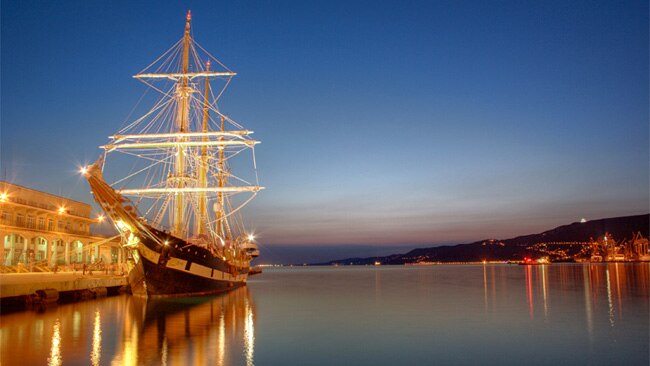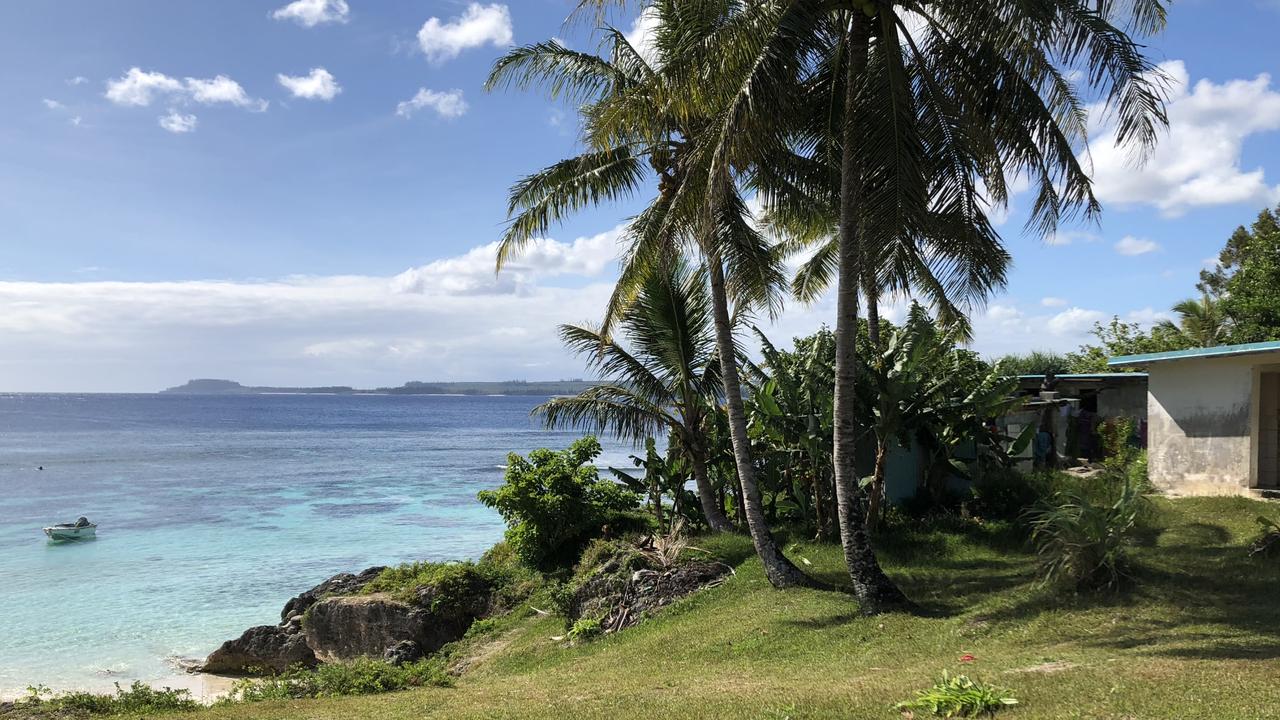Italy's best kept secret
WHILE most tourists flock to the Amalfi coast, Italians drive straight past and head instead to this piece of paradise.

IT'S six in the evening in the medieval hilltop town of Castellabate and the winding lanes echo with the sound of sneezing, spluttering and a worrying hacking cough.
Perched nearly 300m above sea level, overlooking Italy's Cilento coast, Castellabate is incredibly atmospheric, despite the unusual soundtrack. It's dominated by a 12th-century castle, once used as a retreat from Saracen raids.
Just two hours south of the bustling chaos of Naples, the Cilento region is one of the most remote parts of Campania. Instead of turning right off the A3 and heading to the undeniably beautiful but often crowded and pricey Amalfi coast, I'd continued on past Salerno, leaving better-known resorts behind.
Much of the area is covered by the Cilento national park - the second largest in Italy - and it boasts 100km of coastline and a wild, mountainous interior sprinkled with historic villages still wedded to a traditional way of life.
This is where ordinary Neapolitans escape to in the summer and is still largely off the tourist radar, granted little more than a passing mention in most guidebooks.
A zigzagging road takes me down from Castellabate to the coastal village of Santa Maria di Castellabate, where the evening passeggiata is in full swing, with young and old strolling along the seafront. At the heart of the historic centre is a sandy beach, surrounded by noble palazzi and fishermen's houses.
I sit outside Café Gioia and ask the waitress for the orange-coloured aperitivo that everyone seems to be drinking and am introduced to "spritz", a delicious concoction of Aperol and prosecco. As the sun melts into the sea, I move next door to Per Bacco restaurant and feast on fried fresh anchovies with bread, olives and tomatoes (a Cilento special) and linguine with baby squid and broad beans.
Follow the coast south from here and you'll discover a mix of sandy bays, rocky coves and imposing cliffs, dotted with fishing villages and tiny holiday resorts.
A land of myth and legend
Tiny Marina di Pisciotta is famous for keeping centuries-old fishing techniques alive, using the moon and the stars to determine where the anchovies will surface. Visitors can go out with the fishermen at night and then dine with them on the catch, dressed simply in extra virgin olive oil and lemon (the fish, not the tourists).
I spend the night in the lovely Hotel L'Approdo, right on the water's edge at San Marco di Castellabate, Santa Maria's smaller neighbour. From here you can walk the picturesque coastal path along Cape Licosa, follow a donkey track through pine forests to the top of Mount Licosa for wonderful views, or take a boat to a tiny island that's inhabited by lizards. This is a land of myth and legend and it's said that the area's named after the siren Leucosia who came here to die, heart-broken after she failed to lure Odysseus and his crew ashore with her singing.
Legend also holds that Palinuro, about an hour further south along the coast, was named after the helmsman of the Aeneid, who fell overboard close to the coast. It's one of the larger, most popular seaside resorts, but the real attraction is the rugged coastline riddled with sea caves and cliffs reaching 200m, topped with watchtowers and a lighthouse.
I take a boat trip around the shore, stopping in caves along the way - the water in the blue grotto is a dazzling aquamarine, the result of sunlight from an underground passage, while the blood grotto glows with red algae, and a hawk flies out of the darkness, narrowly missing our heads.
Cape Palurino offers wonderful terrain for hiking, cycling or riding and I decide to explore a bit more on horseback.
Traditional Italian delights
Top of the list is ancient Paestum (originally Poseidonia), with some of the best-preserved Greek temples in Europe.
For anyone who enjoys more quirky sightseeing, though, I'd recommend a look in at the Joe Petrosino museum, in the house where the local hero was born in 1860.
After emigrating to New York as a child, Petrosino became the first Italian officer in the NYPD, and made it his goal to defeat the mafia, but was killed on a trip to Palermo to investigate its links with the Chicago "Black Hand" in 1909.
Besides the coast and scattered historic attractions, the wild interior is Cilento's trump card. Few roads wind across the rocky mountains, a rail route cuts through the region but doesn't stop, and the isolation has left the gorgeous countryside unspoilt and local traditions preserved.
Compared with the coast, there are few places to stay inland, but Agriturismo Le Favate, a 400-year-old farmhouse hidden in the countryside near Ceraso, is a real find.
Le Favate's setting on a 100-hectare farm is idyllic. It's an agriturismo of the purest kind: everything served here is produced on the farm, including the wine, olive oil and cheese.
In the evenings owner Elvira Licusati prepares traditional delights such as cavatelli pasta with beans or buffalo - less fatty than beef - grilled with tomato and rocket, followed by fresh fruit from figs to cherries.
It's the sort of place you'd never want to leave - but her guests do venture out, Elvira tells me, walking the 4km down to the beach at Ascea, exploring the historic sites nearby or hiking in the surrounding mountains.
I could linger all day by the pool, with the sea in the distance and just the sound of birdsong in the air, but have to go further on around the coast to my final destination, the 13th-century town of Maratea. Though not strictly part of Cilento (it actually falls into neighbouring Basilicata), if you're in the area it'd be a shame to miss it.



